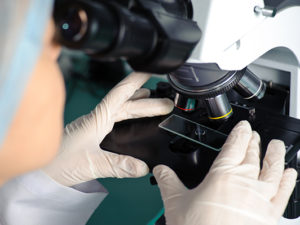HEATING AND COOLING Mold Removal Solutions
Residential HVAC Mold Removal Providers
A Plus Enviro-Services property duct and vent cleaning experts are qualified and trained in residential air duct cleaning and HEATING AND COOLING system mold cleaning and remediation. We supply customized domestic HVAC duct and vent cleansing, mold remediation, and other cleaning services. Our objective is to use budget-friendly, educational, sincere, local and high quality assistance to our domestic clients by enhancing their indoor air quality, energy effectiveness, and safety. Did you know airborne contaminants are pulled into the air ducts whenever the heating and cooling system runs. In time, these contaminants increase inside the ductwork, forming a perfect breeding ground for mold, bacteria, fungi, and other microbes.
How We Do It
The existence of microbial development (mold) in an A/C system is a typical problem and a variety of aspects can add to the microbial growth. The HEATING AND COOLING system, consisting of piping and drain pans, can be sources of microbial growth. A raised mold condition can cause many different side effects with the most typical issue being allergic reaction signs. The items brand-new is that generally mold contamination in A/C systems and air vents are confined to little areas.
Cleaning is generally not very complicated. Do not lose your money with unqualified companies and fraudsters. Call us for a totally free and instructional price quote today. Strong Acid Water Sanitizer A Plus Enviro-Services utilizes a strong acidic water as a sterilizing representative due to the fact that it's organic, totally safe for humans, pets, and the environment. This strong Acidic Water is an electrolytic water with electric capacity, which means that its chemical decomposition is produced by passing an electrical current through a liquid or solution containing ions. This consists of the hypochlorous acid (SDS) produced from an anode when electrolysis occurs. It is made by using an electrolysis enhancer to tap water, this in itself is not a chemical.
Strong Acidic Water 2.5 pH works as an antifungal, antibacterial, and an antiviral agent. This water eliminates bacteria within an average of https://en.wikipedia.org/wiki/?search=Mold inspection 30 seconds, and due to the fact that of this the water is stronger than popular disinfectants and it has multi-purpose usage. Strong Acidic water was approved for disinfecting food in June 2002, in accordance with the Food Hygiene Law, under the name hypochlorous acid water.
Discover more Why Choose Us A Plus Enviro Provider Inc. DBA Air Duct Cleansing Plus is fully accredited, bonded and guaranteed. What our clients are saying We can extremely recommend them as a super friendly and expert contractor who helped us tremendously with a current inspection of our house's air duct/vent system.

Indoor mold Wikipedia
Fungal development that establishes on wet materials Indoor mold on the head jamb of the window in a multi-storey building. Mold (American English) or mould (British English), also often described as mildew, is a fungal development that develops on wet products. Mold is a natural part of the environment and plays a vital part in nature by breaking down dead organic matter such as fallen leaves and dead trees; inside, mold growth ought to be prevented. Mold replicate by methods of small spores. The spores resemble seeds, however invisible to the naked eye, that float through the air and deposit on surface areas. When the temperature, moisture, and readily available nutrient conditions are appropriate, the spores can form into brand-new mold colonies where they are deposited.
Exposure to high levels of mycotoxins can cause neurological issues and death. Extended exposure (for instance, everyday exposure) can be particularly damaging. Mycotoxins can persist in the indoor environment even after death of the fungi. They can comply with dust particles and can spread out through the air connected to these dust particles or spores. [3] There need to be very particular temperature level and humidity conditions in order for fungis to produce mycotoxins.
Symptoms [edit] Symptoms of mold exposure may include nasal and sinus congestion; runny nose, eye inflammation; scratchy, red, watery eyes, respiratory issues, such as wheezing and problem breathing, chest tightness, cough, throat inflammation, skin irritation (such as a rash), headache, and consistent sneezing.
Immune-compromised people and people with chronic lung illnesses, such as obstructive lung illness, may get serious infections in their lungs when they are exposed to mold. These individuals need to keep away from areas that are likely to have mold, such as compost piles, cut turf, and wooded locations.
Asthma [edit] Infants may establish breathing signs as a result of exposure to Penicillium, a fungal genus. Signs of mold-related respiratory issues in a baby include a persistent cough or wheeze. Increased direct exposure increases the possibility of developing respiratory signs throughout the very first year of life. Research studies have actually shown a correlation between the probability of establishing asthma and exposure to learn more Penicillium.
Causes and growing conditions [edit] Mold is discovered all over and can grow on practically any substance when moisture is present. They reproduce by spores, which are brought by air currents. When spores arrive at a damp surface area suitable for life, they start to grow. Mold is usually found inside your home at levels which do not impact most healthy people. Due to the fact that typical structure materials can sustaining mold development and mold spores are common, mold development in an indoor environment is usually connected to water or moisture direct exposure and may be brought on by incomplete drying of flooring materials (such as concrete). Flooding, leaky roofs, building-maintenance or indoor-plumbing issues can lead to interior mold development. Water vapor commonly condenses on surface areas cooler than the moisture-laden air, allowing mold to flourish. [citation required] This wetness vapor passes through walls and ceilings, normally condensing during the winter season in environments with a long heating season. Floorings over crawl areas and basements, without vapor barriers or with dirt floorings, are mold-prone. The "doormat test" detects wetness from concrete pieces without a sub-slab vapor barrier.